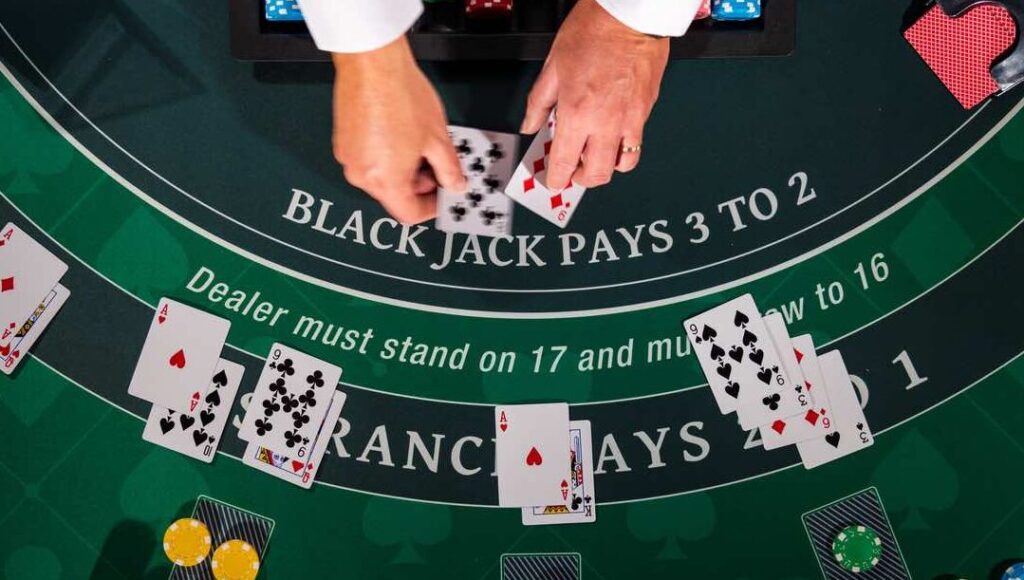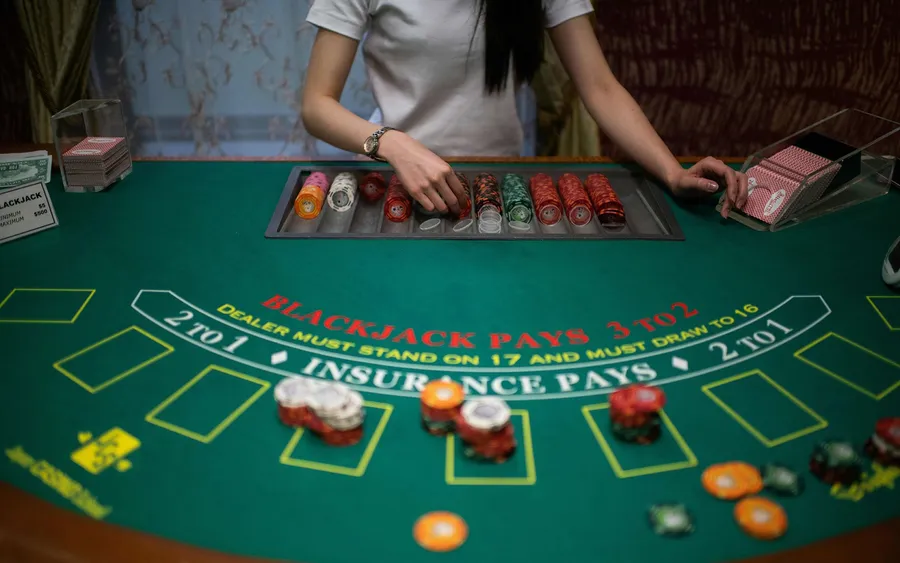When it comes to blackjack, one of the most intriguing concepts that captivate players and Hollywood filmmakers alike is card counting. But how does card counting work, and is it really legal? Let’s break down the basics in a way that’s as easy to understand as it is entertaining.
Table of Contents
ToggleThe Basics of Blackjack: A Quick Recap
Before we dive into the world of card counting, let’s make sure we’re all on the same page with the basics of blackjack. All you need to do is just to beat the dealer’s hand without exceeding 21. While it may sound easy, blackjack is a game of strategy, probability, and skill. Unlike slot machines that rely purely on chance, blackjack offers players an opportunity to gain an edge—and that’s where card counting comes into play.

What is Card Counting?
Card counting is a strategy that players use to keep track of the high and low cards dealt in a game of blackjack. By doing so, they can predict the probability of certain cards being dealt and adjust their bets accordingly. The core idea is simple: if the deck has a higher proportion of high-value cards (10s, face cards, and Aces), the player has a better chance of hitting a blackjack or winning the hand. Conversely, if the deck is heavy with low-value cards (2s through 6s), the odds tilt in favor of the dealer.

The Hi-Lo Card Counting System Explained
The most common and beginner-friendly method of card counting is the Hi-Lo system. This system is popular because it’s simple to learn and effective when used correctly. Here’s how it works:
- Assign Point Values: In the Hi-Lo system, every card is assigned a value:
- 2, 3, 4, 5, and 6 are counted as +1.
- 7, 8, and 9 are neutral and worth 0.
- 10, J, Q, K, and A are counted as -1.
- Keep a Running Count: As each card is dealt, the player keeps a mental tally based on the assigned values.
- Determine the True Count: If you’re playing in a game with multiple decks, you’ll need to convert your running count into a “true count” by dividing the running count by the number of decks remaining.
- Adjust Your Bets: When the true count is positive, it’s an indication that there are more high cards left in the deck, so you’ll want to increase your bet. When the true count is negative, bet smaller or consider sitting out a hand.
For example, if you’re in the middle of a game and your running count is +5 with two decks left, your true count would be +2.5 (5 divided by 2). A true count above +2 usually signals that it’s time to up your bet and take advantage of the favorable odds.

Debunking Myths: Card Counting Isn’t Rocket Science
Many people think card counting is complicated or only for math geniuses. But the truth is, with practice and patience, anyone can learn how to count cards in blackjack. In fact, card counting isn’t about memorizing every card; it’s about keeping a simple mental tally and staying focused. And no, you don’t need to be “Rain Man” to pull it off.
Why the Hi-Lo System Works
The Hi-Lo system works because it helps players track the ratio of high cards to low cards remaining in the deck. When there are more high cards left, players are more likely to hit a blackjack and win hands with stronger totals. The dealer, on the other hand, is forced to follow strict rules about hitting or standing. This disparity gives players an edge when they know how to time their bets.
It’s important to note that card counting doesn’t guarantee a win every hand. Instead, it shifts the odds slightly in the player’s favor over time. This small edge, when used consistently, can make the difference between losing money and walking away a winner.
Is Card Counting Legal?
Here’s where things get interesting. Many players ask, “Is card counting legal?” The short answer is yes, card counting is legal—at least in the eyes of the law. Casinos, however, don’t love it when players use strategies that tip the odds in their favor, so they’ll take steps to counteract card counters.
Why It’s Legal: Card counting is essentially a mental exercise. You’re not using any devices, software, or other external tools; you’re simply observing, thinking, and making decisions based on what you see. This makes it entirely legal under U.S. law.
Why Casinos Dislike It: While card counting isn’t illegal, it’s frowned upon by casinos because it cuts into their profits. A skilled card counter can reduce the house edge and even gain an advantage over the casino. To combat this, casinos use various countermeasures, such as shuffling the deck more frequently, using multiple decks, or even banning players they suspect of counting cards.
How Do Casinos Spot Card Counters?
Casinos employ trained staff and use surveillance systems to spot potential card counters. Below are some of the common tactics they use.
- Watching Betting Patterns: If a player consistently bets more when the true count is positive and less when it’s negative, they might raise suspicions.
- Observing Gameplay: Skilled dealers and pit bosses look for telltale signs of counting, such as intense focus, minimal conversation, and sudden changes in betting behavior.
- Facial Recognition and Surveillance: Some casinos use advanced technology to track known card counters who have been previously identified.
The Reality of Getting Caught
What happens when you are caught counting cards? The good news is, you won’t be thrown in jail—remember, it’s not illegal. But, as a private business, casinos still have the right to reject servicing you. If they suspect you’re counting cards, they might ask you to leave or “back you off,” which means you can stay and play other games but not blackjack. In extreme cases, players are banned outright or added to a blacklist shared among multiple casinos.
Famous Card Counters and Teams
Card counting isn’t just a technique; it’s part of gambling lore. The most famous example is the MIT Blackjack Team, a group of students who used their math skills to win millions in casinos during the 1980s and 1990s. Their exploits were so legendary that they inspired books and movies, including the popular film 21. This team used a sophisticated system of signals and team play to avoid detection while maximizing their winnings.
Other notable card counters include professional players like Ken Uston, who literally wrote the book on team play and card counting. His efforts even led to legal battles with casinos that inadvertently publicized the legality of card counting.

Conclusion: The Thrill of Card Counting
Card counting in blackjack isn’t about breaking the rules; it’s about mastering a strategy that gives you a slight edge. While it’s completely legal, casinos aren’t obligated to let card counters play. So, if you decide to learn this skill, remember to tread carefully, practice diligently, and above all, enjoy the game.
Now that you know how to count cards in blackjack and understand the legality behind it, why not give it a try? Just remember: count smart, bet smart, and play it cool! With the right approach, card counting can turn blackjack from a simple game of chance into an engaging challenge where skill meets opportunity.





